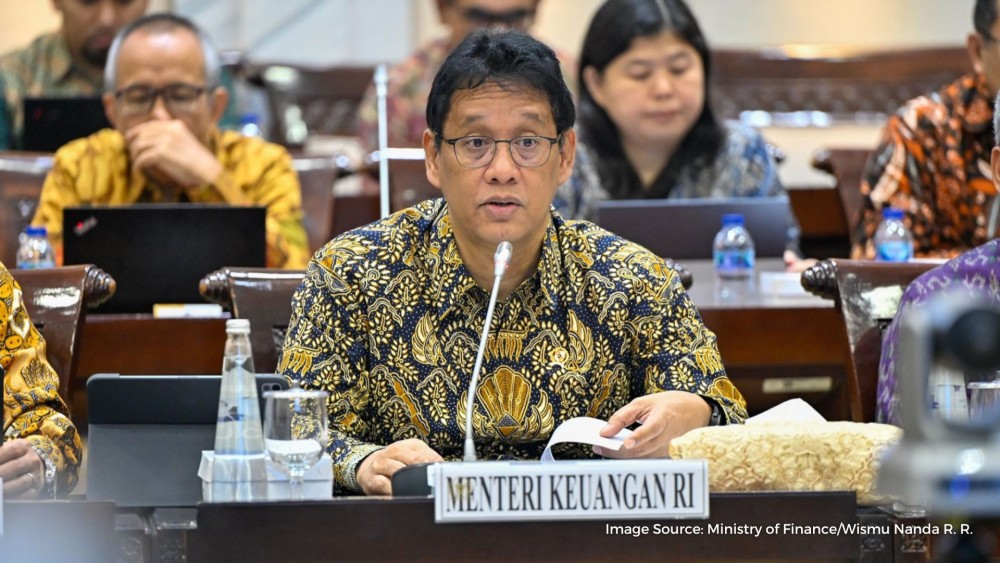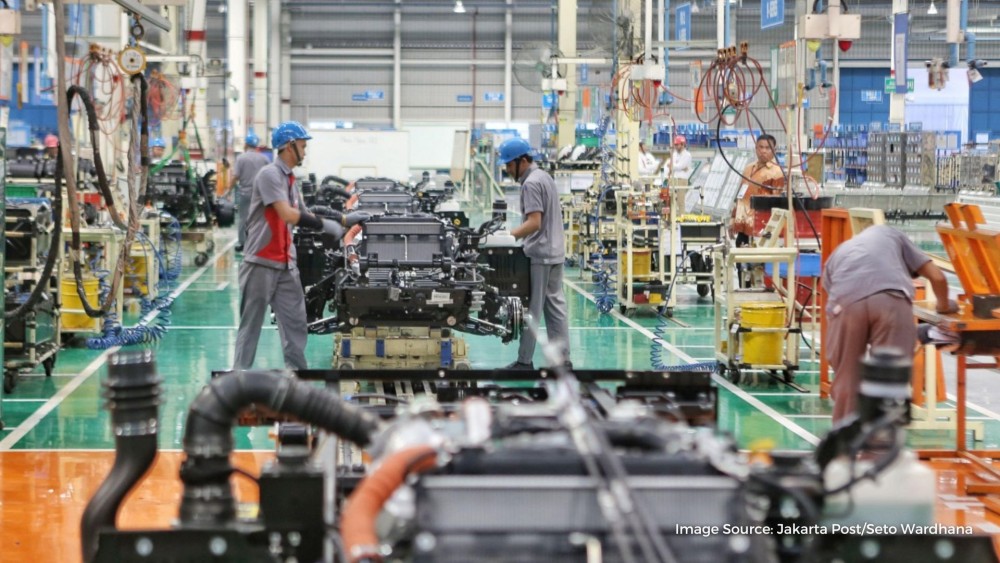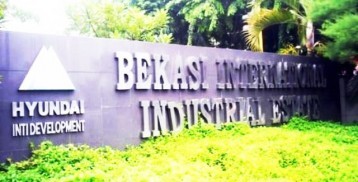Indonesia’s Construction Sector Builds Steady Momentum as Infrastructure Drives Growth
05 Nov 2025

The construction sector remains one of Indonesia’s key economic pillars, contributing over 10 percent to national GDP in the final quarter of 2024, as reported by the Central Statistics Agency (Badan Pusat Statistik/BPS). Despite global headwinds and tighter financing conditions, the industry continues to expand, supported by public investment, private participation, and a broad base of infrastructure and energy projects that sustain momentum through 2025 and beyond.
According to data from BPS, construction value-added grew 7 percent in 2024 and maintained a 3.6 percent year-on-year increase during the first half of 2025. The sector’s performance aligns with stable macroeconomic indicators, including a gradual easing of inflation. Bank Indonesia reported that core inflation fell to 2.32 percent in August 2025, remaining comfortably within the government’s 2.5 percent target range. This macroeconomic stability has provided a favorable environment for both public and private project financing to progress despite cost pressures.
Indonesia GDP Share of Construction Sector in IDR Trillion, Quarterly
|
Quarter |
Q2 2025 |
Q1 2025 |
Q4 2024 |
Q3 2024 |
Q2 2024 |
Q1 2024 |
Q4 2023 |
Q3 2023 |
Q2 2023 |
|
GDP Share |
317 |
314 |
334 |
320 |
302 |
307 |
315 |
298 |
281 |
Source: BPS
Growth expectations for 2025 remain cautiously optimistic. “The total market for construction projects in 2025 is expected to grow by 5.48 percent compared to 2024,” said Cahyono Siswanto, National Research Manager at BCI Central, a Jakarta-based consultancy that focuses on construction project, as quoted by Media Konstruksi late last year. This projection includes both building and civil engineering works but excludes oil and gas. The same report estimates the total market value at IDR 381.6 trillion in 2024, divided between IDR 227.76 trillion for buildings (59.7 percent) and IDR 153.84 trillion for civil works (40.3 percent). Within that distribution, BCI forecasts a 9.09 percent increase in the building sector in 2025, offsetting a 2.62 percent decline in civil construction due to tighter budget allocations.
That budget tightening, however, is partly mitigated by the state’s long-term infrastructure strategy. The government’s Rencana Pembangunan Jangka Menengah Nasional (RPJMN) 2024–2029 sets an annual infrastructure investment target equivalent to about 5 percent of GDP. The plan encompasses more than 200 National Strategic Projects (PSN) worth a combined 6.4 trillion rupiah, including logistics corridors, ports, and urban transit systems, many structured under public–private partnership (PPP) schemes to encourage foreign participation. These projects maintain a continuous flow of civil works, ensuring that the construction sector remains deeply linked to Indonesia’s broader economic agenda.
At the same time, the Ministry of Public Works and Housing (PUPR) has reinforced its commitment to this agenda through increased budgetary support. The ministry’s 2025 allocation, initially proposed at IDR 75.63 trillion, was approved at IDR 116.23 trillion earlier this year. Its spending priorities include infrastructure for food and energy security, renovation of educational facilities, and the ongoing development of the new capital city, Ibu Kota Nusantara (IKN).
Nusantara itself represents one of Indonesia’s most ambitious undertakings in decades. With a USD 35 billion master plan and IDR 48.8 trillion (approximately USD 3 billion) earmarked for 2025–2029, the capital relocation project combines sustainable energy systems, smart city technologies, and large-scale urban construction. Early participation in Nusantara projects offers foreign and local contractors alike access to long-term infrastructure, housing, and technology opportunities that will unfold over the next decade.
Beyond Infrastructure
Beyond the capital’s boundaries, energy and industrial development are expanding construction demand. The 2025–2034 Electricity Supply Business Plan (Rencana Umum Penyediaan Tenaga Listrik or RUPTL) calls for 69.5 gigawatts of new generation capacity by 2034, 76 percent of it from renewable sources such as solar, hydro, wind, and geothermal power, at a projected cost of IDR 2.97 quadrillion. Complementing that plan, the state utility PLN’s renewable energy roadmap through 2040 includes an additional 31.6 GW of capacity, creating extensive opportunities for builders involved in generation, transmission, and supporting infrastructure.
This wave of projects extends to the industrial sector, where downstream processing of minerals and the construction of smelters, industrial parks, and logistics facilities are reshaping regional economies. In Sulawesi, for example, the expansion of the Morowali Industrial Park has driven demand for vertical construction and worker housing, while in Kalimantan, smelting and the relocation of government functions to Nusantara have spurred double-digit growth in cement demand. Together, these trends illustrate how regional diversification is increasingly defining Indonesia’s construction geography.
The distribution of opportunities is shifting accordingly. Pusat Studi Transportasi dan Logistik (Research Center for Transportation and Logistics) at Universitas Gadjah Mada (UGM) projects that in 2026, non-budget-funded projects—particularly PSN and PPP ventures—will make up 82 percent of the national construction market, valued at around IDR 698.6 trillion. Only 18 percent will be directly financed through the state budget. UGM’s Head of Construction Project Management Laboratory, Prof. Danang Parikesit, emphasized in a September 2025 webinar that “demand in the non-APBN market will be high, but business risks and the need for competency transformation are equally significant.”
Indonesia’s PSN / PPP, 2025 onwards
|
Program / Project |
Sector |
Est. value (IDR / USD) |
Timeframe |
Latest public status (as of Nov 2025) |
|
RUPTL 2025–2034 (Power build-out: 69.5 GW, ~76% renewables) |
Energy & utilities |
IDR 2.9 quadrillion (USD 183 billion) |
2025–2034 |
Plan launched May 26, 2025; pipeline targets 69.5 GW new capacity with majority renewables; procurement and IPP structuring ongoing. |
|
North Java Coast Seawall (Banten–East Java, ~700 km) |
Coastal protection / Infrastructure |
USD 80 billion |
~20 years (phased) |
Announced 2025; authority established Aug 25, 2025; government inviting foreign investors; planning & preparatory steps under way. |
|
Nusantara (New Political Capital) – Masterplan |
Urban / Government |
USD 32–35 Billion |
Through 2045 (phased) |
Project continues with re-scoped focus; mid-2025 development of ~800/6,600 ha of core area; IDR 48.8 Trn earmarked 2025–2029; ~USD 4 Billion private commitments secured by Apr 2025. |
|
Trans-Sumatra Toll Road (JTTS) ~2,700–3,000 km |
Transport / Toll roads |
IDR 476 Trn (USD 33 billion) (historic estimate) |
Multi-year |
Partial operation & construction ongoing; 1,235 km built (800 km operating, 435 km under construction) by Sep 2024. |
Source: Various reports, compiled by Business-Indonesia.org
Modernizing Construction
The financing shift coincides with a push for technological and regulatory modernization. PUPR’s Directorate General of Highways has issued guidelines requiring Building Information Modeling (BIM) for projects such as roads, bridges, and tunnels, with over 100 government projects already using BIM according to the Indonesian Contractors Association (Asosiasi Kontraktor Indonesia/AKI). This aligns with broader efforts to digitalize project management and improve efficiency. The ministry’s focus on BIM also complements environmental initiatives from the Green Building Council Indonesia, which, along with the IFC’s EDGE program, is promoting energy- and water-efficient construction practices across both public and private developments.
Environmental standards have also become an integral part of project design, particularly for government-backed and internationally financed contracts. As noted in the UGM discussion, integrating green standards from the planning stage not only enhances sustainability but also expands access to global financing tied to environmental, social, and governance (ESG) benchmarks. This convergence of digital and green construction is transforming how Indonesian contractors and developers position themselves within an increasingly competitive market.
That market remains a major source of employment, with the construction sector engaging approximately 13.8 million workers—or 9.6 percent of Indonesia’s total labor force—according to research from the Institute for Economic and Social Research at the University of Indonesia (LPEM FEB UI). Yet, the same studies underline the need for accelerated certification and training to meet rising project complexity and technological demands. Without parallel investment in human capital, the pace of growth could strain productivity and quality standards.
Despite these challenges, the fundamentals of the industry remain sound. The combination of a steady macroeconomic backdrop, long-term infrastructure investment, and rising demand for housing and energy facilities provides a clear trajectory for sustained growth. As Indonesia continues its transformation through 2030, the construction industry stands not only as a measure of economic vitality but also as a reflection of the country’s capacity to build efficiently, sustainably, and inclusively.
















